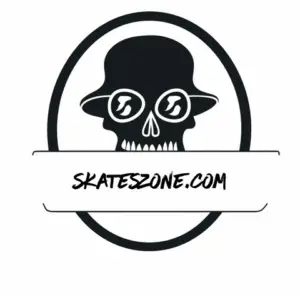Skateboarding would be extremely boring if all you could do was go in straight lines. Luckily, that’s not what skating is about. At its core, skating is about freedom of movement. Anytime you step on a skateboard, you will need to turn it one way or the other. So, it is a good idea to start learning how to turn a skateboard from the very first time you step on it.
The first few months of skateboarding are all spent learning the unspoken fundamentals. You won’t impress anyone with your ability to turn frontside or backside, but you might earn some giggles if you can’t do it. Learning to carve is as important as learning to keep your balance.
Leaning is Carving
Board Setup
The first thing you need to know about turning your skateboard is that it’s all about the trucks. I am sure that, the first question appearing in your brain then is “What size trucks do I need?”. And here is your answer: The width of your axles and the tightness of your kingpin nut both work together to give a skateboard a tighter or wider turning radius. Your axle width should more or less match the width of your deck, so it’s too late to do anything about that now. Experiment with different width decks and trucks as you progress, and soon you will find the perfect combination of both for you.
Before you take your board out to skate, stand on it in place and rock the deck side to side. Press down first with your toes, then with your heels. If the board does not dip easily, loosen the kingpin nut. Conversely, if the bottom of the deck touches the top of the wheels, tighten the kingpin nut. Do not try to get this adjustment perfect. You will be making finer adjustments as you skate. This video gives other ideas for truck adjustment.
Do yourself a favor and learn to turn and carve on smooth, flat concrete or asphalt. You will be using the skills you are learning for the rest of the time that you skate. It is worth the time you invest learning how to turn smoothly while remaining balanced and steady. Skipping ahead to kickflips is possible, but ultimately a waste of time. Experienced skaters have lots of terms for kids who can kickflip but can’t turn. Don’t be one of them.
So, you’re rolling on that smooth parking-lot concrete. Learning frontside turns first makes sense, as most skaters find turning frontside easier. Assuming you are regular-footed, pressure your heels down toward the concrete, leaning back as you do. The board will turn to the left, and the front of your body will be facing the direction of the turn, making it frontside.
Pressing your toes down while leaning forward is a backside carve. It is more difficult for most riders because it is essentially a blind-side turn. Whichever way you are turning, though, remember to get your shoulders involved. Stay aware of where they are positioned relative to your hips, as this relationship will be important in our next step.
Picking Up the Front Wheels
The easiest way to turn a board is to simply press down on the tail, picking up the front wheels off the ground, and twist to the left or right. If your trucks are too tight, this will be the only way you can turn. It is inefficient and not smooth in the least, but it works well enough at first.
The more advanced way to turn a skateboard is pick up the front wheels while leaning one way or the other. In this way, you will pivot on the back truck only, which will cause the board to turn much more sharply than it can with all four wheels in contact with the ground. When using this method, it is imperative that you lean into the turn.
Throw your lead shoulder into the curve first, and everything else will follow. Don’t overdo it though. With all the weight on the back truck, it becomes much more likely that wheels will rub on the bottom of the deck, which stops them cold and sends riders flying.
Conclusion
Learning to maneuver a skateboard is critical to your progression. Some skaters find this developmental phase boring and want to rush through to the “real” tricks. Tempting as it may be to accelerate the process, don’t do it. You may learn a whole bunch of flip tricks on flat land, but if you can’t hit obstacles, you can’t skate.
Leaning and turning are incredibly important for doing any skate trick on an obstacle. For inspiration and examples, check out Miles Silvas’ part in Adidas’ Away Days video. Your future can look like this, but first learn balance, and then, learn how to fall on a skateboard.
Related post: Best Skateboard
